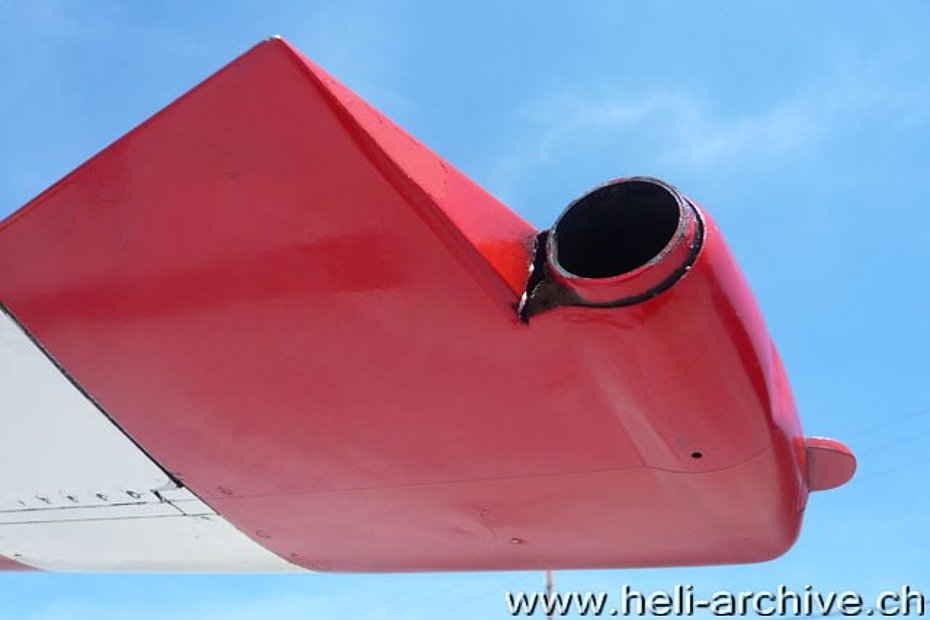
SO 1221PS Djinn - History and technical description
Some historical notes
The Djinn (its name, of Arabic origins, usually refers to a magic genie similar to the one in Aladdin, but also to a little devil) is a French two seat turbine powered helicopter. The main characteristic of this rotorcraft is the fact that the main rotor is not pulled by the mechanical force of the turbine, but by the reaction produced by the ejection of compressed air in the blade tip.
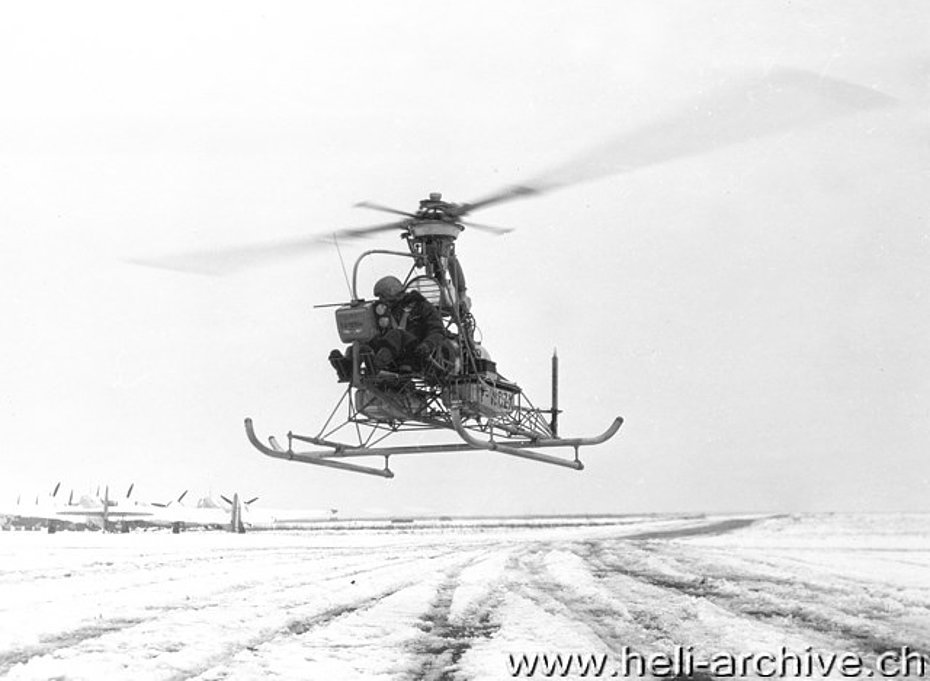
This process does not induce couple effect, and for this reason the helicopter does not have a tail rotor.
The SO 1221PS (PS means Pre-Series) was the successor of the single-seater SO 1220 (built in two prototypes registered F-WGVO and F-WGZX), a model based on the experiences gathered by the French company Societé Nationale de Constructions Aéronautiques du Sud Ouest (known simply as Sud Ouest) on the Ariel I (F-WFKM), II (F-WFUF) and III (F-WFUY).
The first of the two prototypes of the SO 1221-01, registered F-WGVH, made its first free flight on the 14th of December 1953 with the test-pilot Jean Dabos (1923-2012). Two weeks later, on the 29th of December, this helicopter set a new French altitude record, and an international record for helicopters weighting less than 500 kg reaching 4'789 m.
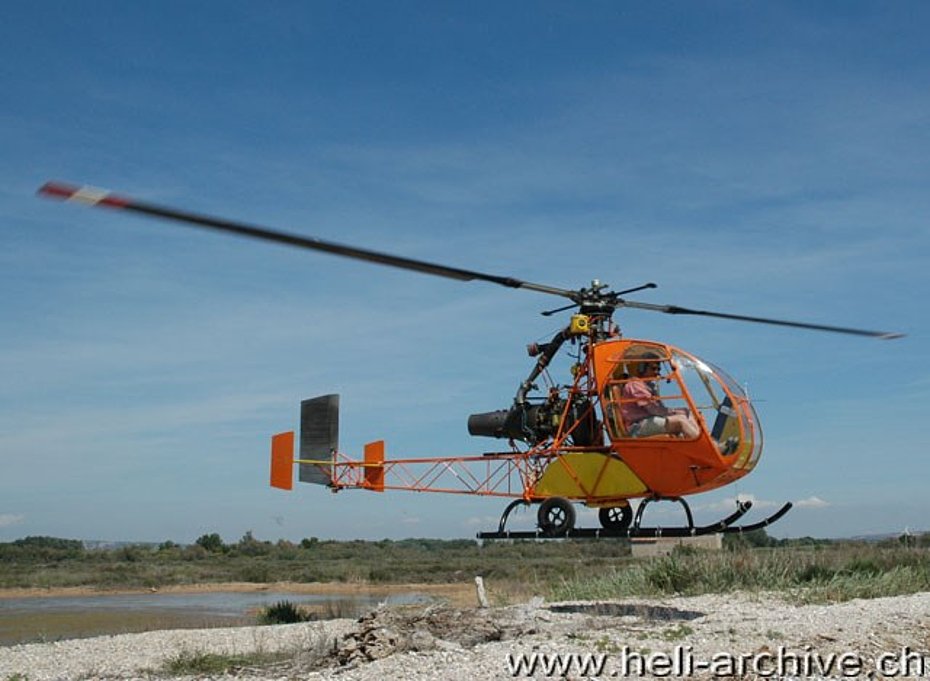
The first results obtained with the two SO 1220 were so satisfactory that the firm decided to develop a two-seat helicopter which received the designation SO 1221. The first of the two prototype, registered F-WGVH, first flew on the 14th of December 1953 with Jean Dabos ad the controls.
After some modifications and numerous tests, the production of about twenty units of pre-series started late in 1954. Much later an improved variant known as SO 1221S was put into production. Among the customers the most important was the French Aviation Légère de l'Armée de Terre.
The Djinn was an excellent "climber", in fact, on the 22nd of March 1957, it set another new (unofficial) world record when it climbed to 8'482 m. This record was later broken by another French helicopter, the Alouette II.
In the Unites States the Djinn was tested by the U.S. Army as YHO-1DJ, and on the 6th of August 1958 it received the CAA type certification.
The popularity of the new turbine powered SE 3130 Alouette II probably overshadowed the Djinn's success. The limitations of the small two-place such as reduced forward speed, range, and payload as well as the high fuel consumption were in fact quite evident.
Some of the ex-military Djinn continued to be used for years in civil roles as a school helicopter or in agriculture as aerial sprayers. When production ceased, a total of 178 units had been built.
Today, after more than fifty years since its first flight, many Djinn still survive. However the majority are now exposed in museums. Few of them are still airworthy.
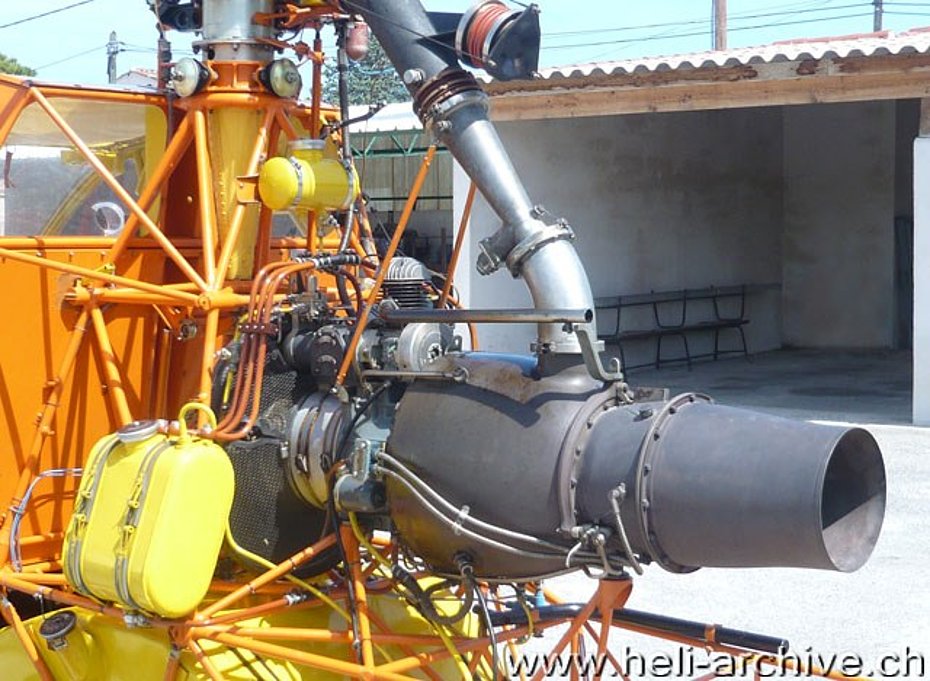
Until today this French model is the only one with this particular configuration which was produced in series for military and civil uses, and it also was the first turbine powered helicopter to be mass produced.
Another contemporary helicopter similar in its functioning principle and dimensions was the British Fairey Ultra-light. However this helicopter was built only in a half-dozen of units.
Technical characteristics
In the SO 1221PS Djinn the main rotor is driven by compressed air (produced by the turbine which drives an air compressor) ejected from a nozzle placed on each blade tip. Since the air, which circulates trough the hub and then along the blades, has a temperature of about 160 °C there is no danger of icing on these essential parts. Despite the relatively high temperature this principle of propulsion is called "cold jet".
The metal blades are flexibly attached to the free-oscillating hub through leaf spring stacks. The great inertia of the Djinn’s rotor is one of its most appreciated characteristics.
Early Djinn were powered by a 164/220 kW/hp Turboméca Palouste I turbine, later replaced with a 179/240 kW/hp Palouste IV. At the beginning the turbine had to be started by hand with a large starting handle that stuck out of the starboard side. This system was replaced, so that the turbine could be easily started with an auxiliary Lavalette 49 cc strap-on engine. By the end an electric starter was then installed.
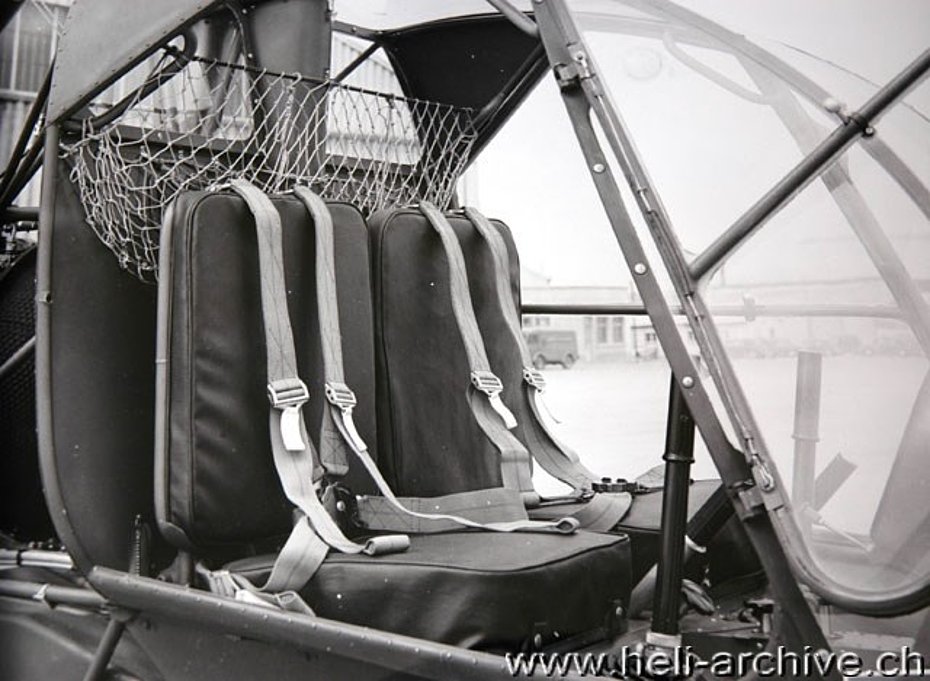
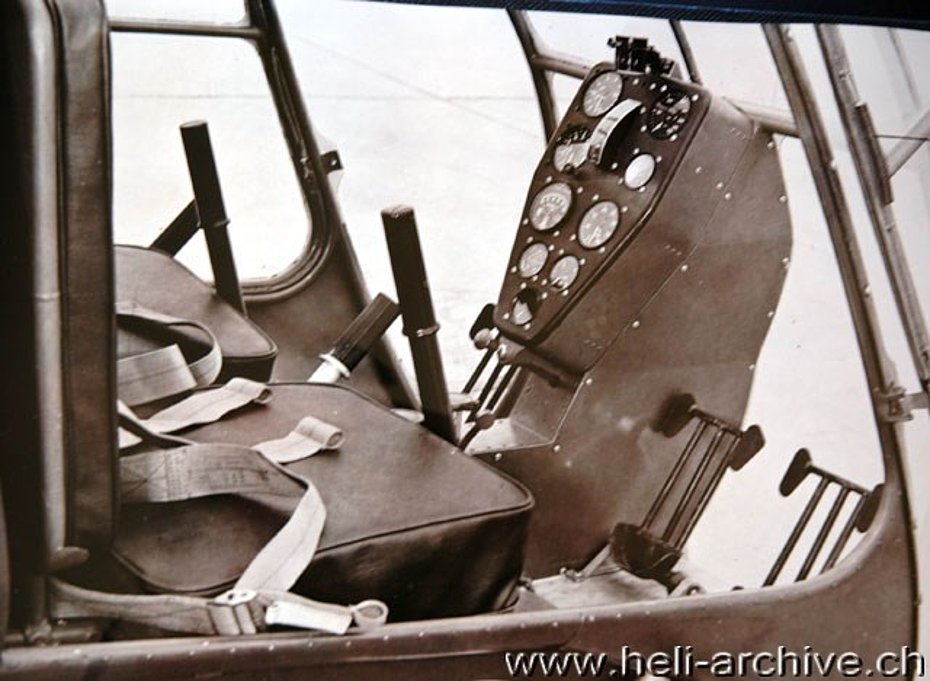
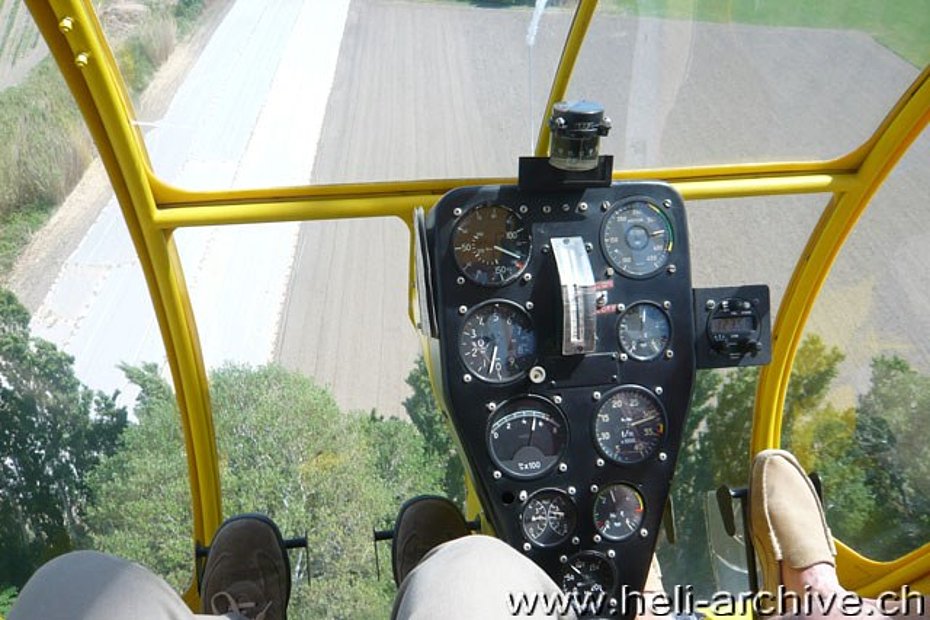
The elimination of the usual mechanical transmission also eliminates the need of an antitorque tail rotor. The Djinn in fact disposes of a simple vertical rudder placed in the continuous flow of the engine exhaust gas which is controlled by pedals as in the other helicopters of conventional design. This simple device permits the directional control around the vertical axis. Several aircrafts were fitted with two small vertical fixed fins to improve directional stability in forward flight. This modification was introduced when the helicopter was used for tests with underslung loads. The instrument panel is located in the front middle part of the cockpit and includes normal helicopter instruments. A plexiglas windshield protects the two occupants from the wind. The cabin can also be fitted with two doors. Heating of the cabin may be obtained by means of a device fitted onto the turbine exhaust.
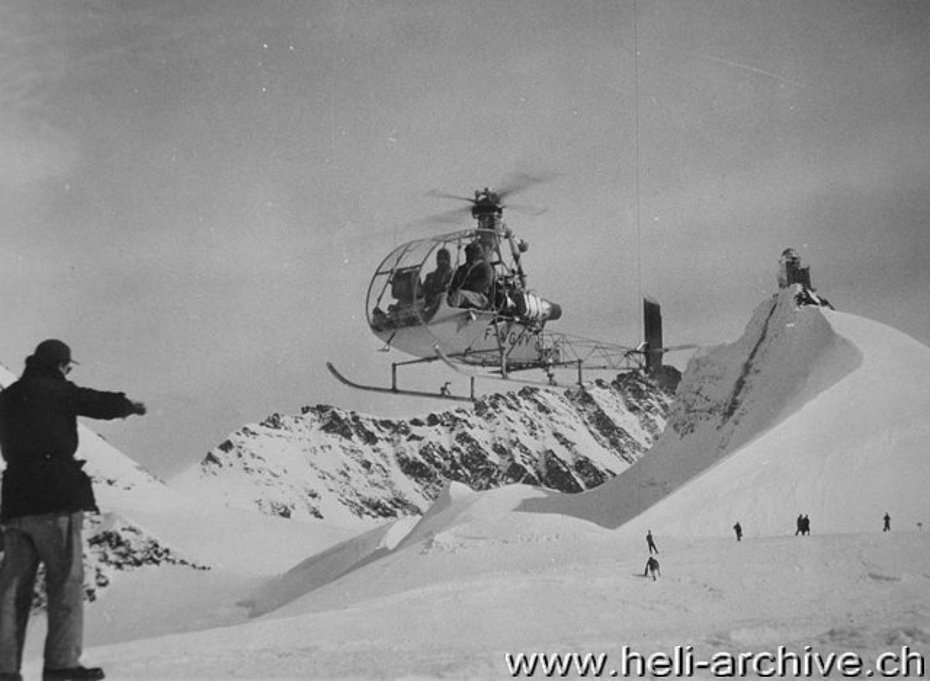
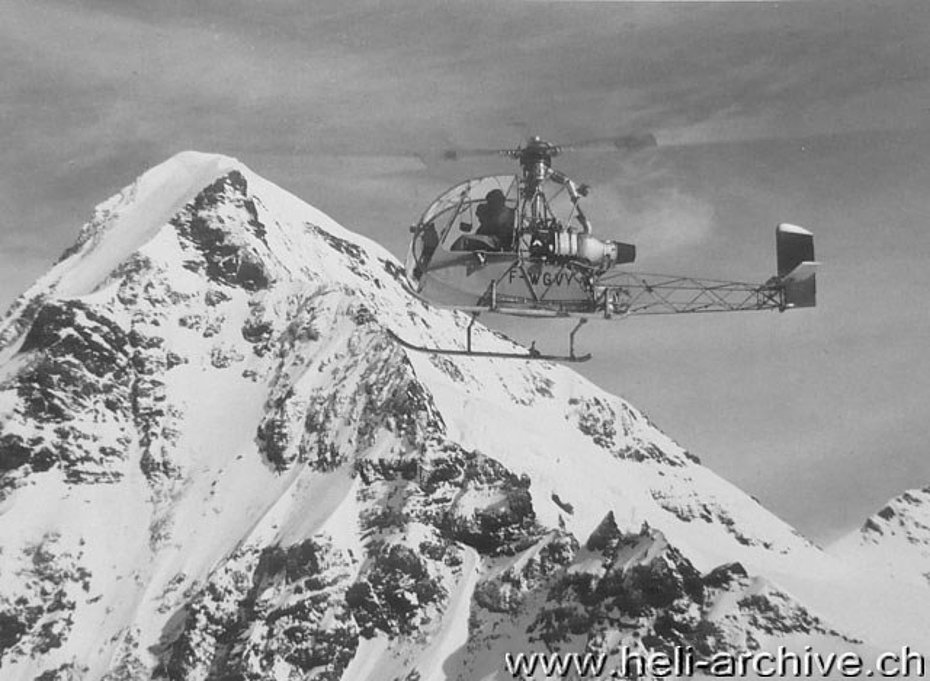
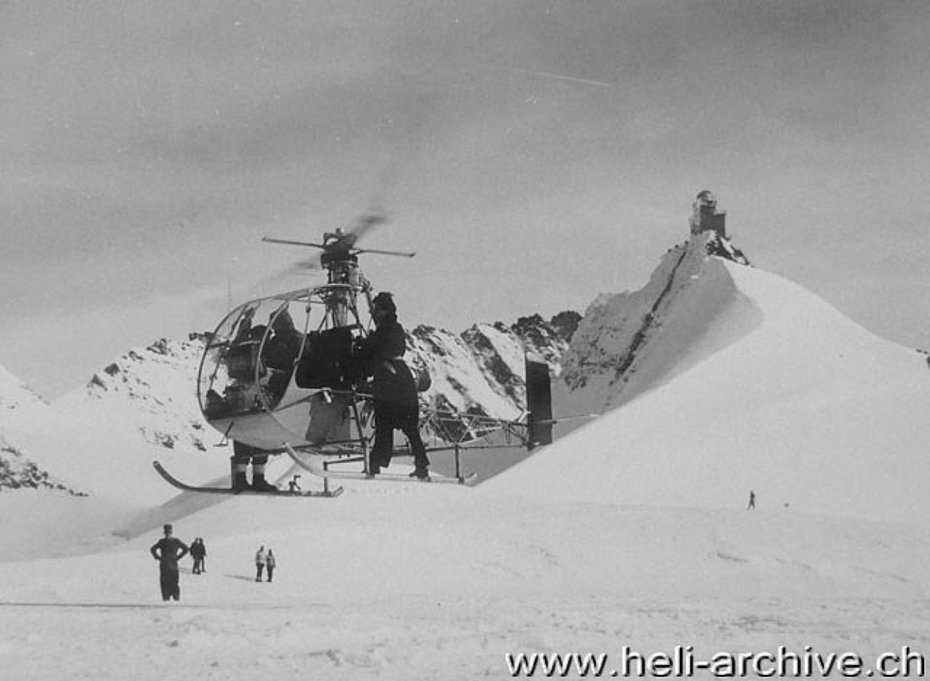
The 250 litres tank is located behind the cabin, under the turbine. The fuselage consists of a very light and rigid welded steel tubes frame. The landing gear is made of two overhung skids mounted at the end of two transversal tubes. The elasticity of these tubes eases the impact of landing.
Maintenance
The maintenance of the Djinn was quite easy. The helicopter needed a periodical maintenance each 25 hours of flight. The inspection after 100 hours of flight required 55 hours of maintenance. Each 300 hours of flight it was necessary to replace the turbine. The general revision after 600 hours of flight required 300 hours.
Performance data
With a gross weight of 500 kg the SO 1221PS Djinn has a standard cruising speed of 90-105 km/h. The never exceed airspeed is 120 km/h. The initial rate of climb is 250 m/min. At a gross weight of 500 kg the helicopter has a service ceiling of 4'500 m, while the hovering ceiling in ground effect (IGE) is theoretically possible at an altitude of approximately 2'500 m, respectively 1'000 m without ground effect (OGE). At its maximum gross weight and with a velocity of 65 km/h its endurance was of 2h15' (about 150 km of range). The hourly average fuel consumption is 100-120 litres (80-96 kg).
These performance data are based on operation in still air (zero wind) under NACA standard atmospheric conditions.
Rotor and engine limitation
The following data refers to the SO 1221S which has a main rotor diameter of 11 meters.
Rotor limits: maximum rotor speed for take-off 400 rpm, maximum rotor speed in flight 380 rpm. Minimum rotor speed in power-on flight 300 rpm (270 rpm during the autorotation).
Engine: maximum indicated engine speed 33'700 rpm at sea level increasing linearly up to 34'700 rpm. Maximum tail pipe temperature during starting and acceleration 650°C, 575°C during normal operation.
Dimensions, weights and payload
The original main rotor of the SO 1221PS Djinn has a diameter of 10.00 m (rotor disc area 78.5 sm). On series models it was replaced with a larger rotor (11.00 meters diameter). The compact fuselage has a total length of 5.30 m. The max height of the helicopter is 2.62 m. The cabin has a width of 1.20 m, while the width of the skid landing gear is 1.86 m. The empty weight of the helicopter is approximately 338 kg, while its maximum take-off weight (MTOW) on this version is 700 kg. Deduced the std weight of the pilot (77 kg), and with a fuel and oil reserve for 45 minutes of flight the payload is approximately 200 kg.
Civil employ
The Djinn was a versatile helicopter, designed especially for light transports, school, aerial observation and photography, air ambulance and liaison duties, aerial sprayer, etc.
Accessories
The helicopter could be equipped with two external litters, an agricultural kit, a hook for underslung loads, and was experimentally used for trials with guided missiles.
The Djinn in flight
Here is a short description of the well known French pilot Jean-Marie Potelle, who logged several hundreds hours of flight on the Djinn: "At first to fly this helicopter one must ensure that he is strong enough to move the controls! From stationary position to take-off there is little hesitation and effort. The foot work is practically non-existent since there is no reversal. When the helicopter reaches its maximum speed it begins to vibrates powerfully. The rotor rpm in flight is 350 rpm, while the turbine runs at 33'500 rpm. In level flight the rotor speed is reduced to 310 rpm. The normal cruising speed is 90 km/h. The descent is regulated at 310 rpm, while the turbine runs at 25'000 rpm. In the final stage before touchdown the turbine is accelerated once more to permit full power and a smooth landing. The Djinn has excellent auto-rotation characteristics: without much difficulty after a complete auto-rotation an experienced pilot can lift again two times the helicopter from the ground. The Djinn can also performs the so called "jump take-off". For this maneouvre the rotor is accelerated to 380 rpm, then with a swift pull on the collective lever it takes-off like the cork of a champagne bottle! Soon after the pilot must lower the collective lever and stabilize the normal rotor rpm".
The SO 1221PS Djinn in Switzerland
On February 1955 the Sud-Ouest decided to test the Djinn in the Alps. For this reason Dabos and a small group of technicians arrived in Switzerland with the F-WGVY, the first Djinn of the pre-series. Between the 7th of February and the 3rd of March 1955 this helicopter made several flights in the Eiger-Mönch-Jungfrau region and proved to be a good "climber".
However in two circumstances Dabos was forced to make an emergency landing. In February, during one of the first attempts to land on the Jungfraujoch, a sudden loss of power forced him to make a long autorotation. Fortunately the French pilot was able to cross over the peak of the mountain. The flight ended with a landing in Interlaken! Another mechanical problem forced Dabos to land on the parking lot of the railway station in Interlaken. The flights were then suspended until the early days of March. They were then restarted on the 3rd of March with much better weather conditions. On that same day Dabos, alone on board, took-off from the Jungfraujoch and 10 minutes later briefly posed the skids on the Mönch (4'105 m).
The following day, in the proximity of the Jungfrau railway station at an altitude of 3’454 m, he did a hovering flight IGE with one person standing on each skid. Several other flights were done by Dabos and the engineer Jean Castagne to test the Djinn and collect useful information.
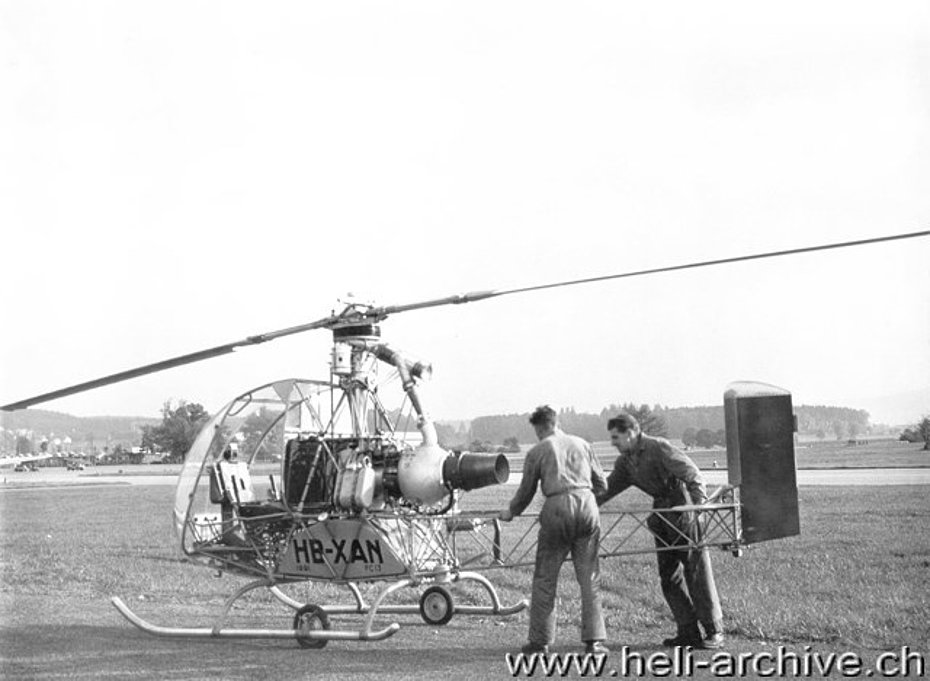
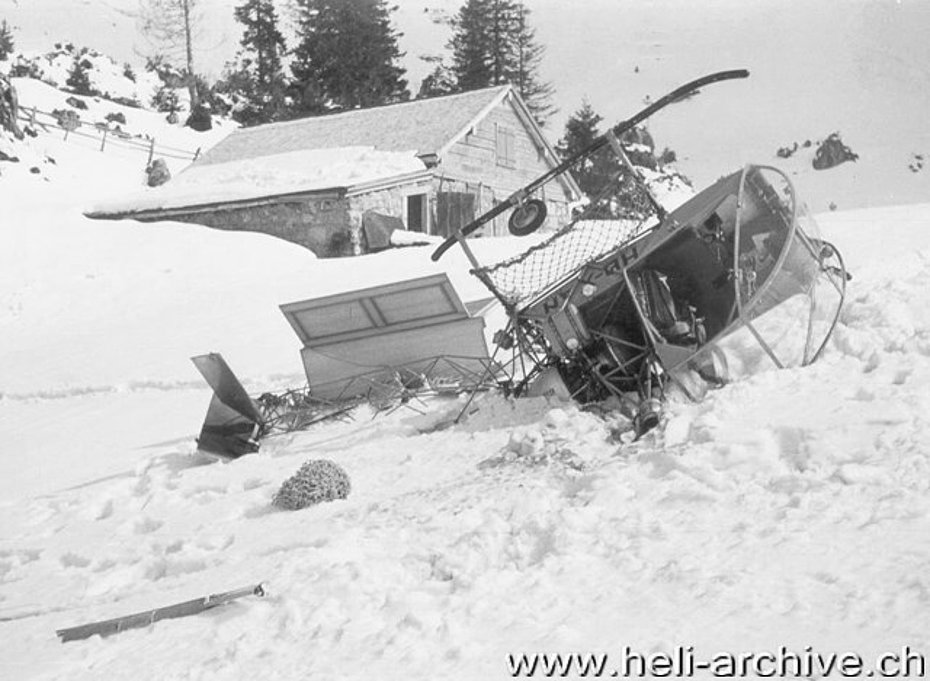
The small helicopter captured the interest of Air Import (the first civil helicopter company in Switzerland) and the Swiss Army.
Air Import, impressed by the Djinn's performances, decided to purchase one for 100'000 Sfr. The HB-XAN (s/n FC13 b/y 1955 ex F-WHHU), which then arrived by air in Kloten from Paris on the 7th of October 1955. It was registered in Switzerland on the 14th of November 1955, and became the first Swiss turbine powered helicopter. This Djinn was also the first to be sold outside the French territory. Among the Swiss civil pilots who flew with the Djinn there are Emil Müller, Walter Demuth, Max Kramer.
Unfortunately this aircraft was lost on 4th of May 1956 during a series of slung load transportations between the Wägitalersee and the Trepsenalp (Canton of Schwyz). During the approach phase the pilot lost the control of the helicopter which crashed on the snow-covered terrain. In the accident the HB-XAN was damaged beyond repair, but fortunately the pilot was not injured.
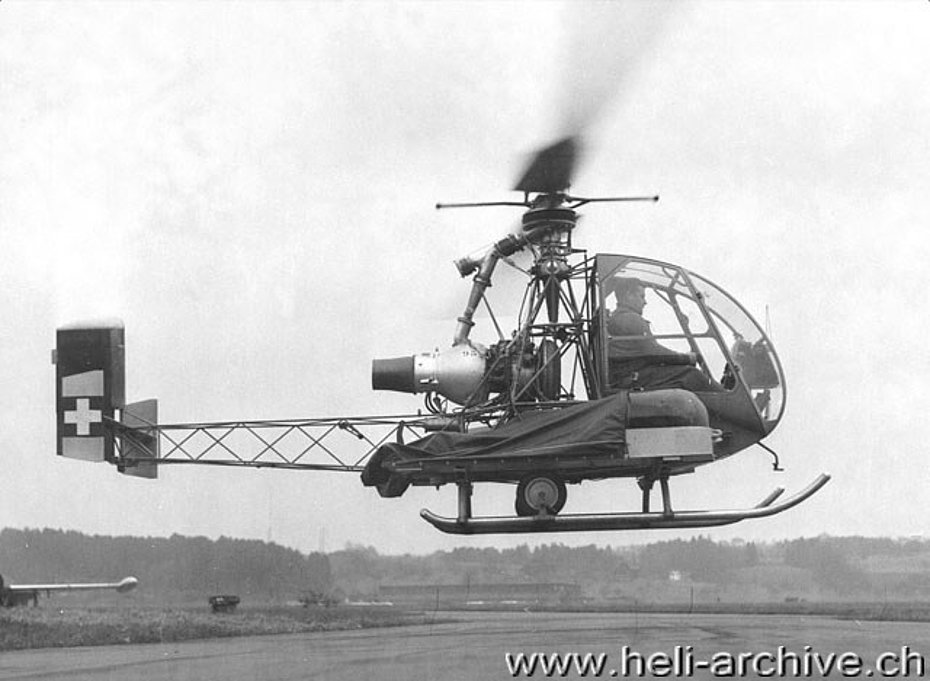
On the 18th of December 1956, Air Import purchased, for another 100'000 Sfr., a second Djinn (SO 1221 PS s/n FC17 b/y 1955 ex F-WHHR) which was registered HB-XAS. In January 1957 Air Import was absorbed by Heliswiss AG. The latter company however did not use this helicopter much, logging only a few hours of flight. It was mostly used for school (one hour of flight cost 300.- Sfr). The Swiss Army used this helicopter for evaluation flights. It was then cancelled from the Swiss aircraft register on the 16th of October 1958 and was sold in France for 82'000 Sfr. where it received the French registration F-BMQZ.
Heliswiss was a little bit preoccupied by the fact that the Djinn of the pre-series batch never obtained the full certification for commercial uses from the OFAC. The helicopter flew in fact with a provisory certificate of airworthiness, and consequently it could only be used for a limited series of tasks. The commercial transportation of passengers was, for example, prohibited. Moreover at that time the Heliswiss' fleet was essentially composed by Bell 47 models. These helicopters offered more cabin space (two passengers instead of one), and had a greater payload.
The Swiss Army put in service a total of four SO 1221S. The first three were registered V-21, V-22 and V-23 and entered in service in February 1958. On the 2nd of September 1958 the V-21 was destroyed in an accident occurred in Andermatt/UR (cable collision). On July of the following year a fourth Djinn was acquired and registered V-24. These three helicopters remained in service until 1966.
A Djinn painted as the V-23 (which is not however the original one employed by the Army) is now exposed in the Fliegermuseum in Dübendorf/ZH.
Videos
Last but not least do not miss to watch these videos:
Elicotteri per l'agricoltura(Helicopter for the agricolture - commentary in Italian)
https://www.youtube.com/watch?v=HWb79JrnvU0
French Jet Helicopter Tried Out (commentary in English)
http://www.britishpathe.com/video/french-jet-helicopter-tried-out-aka-jet-helicopter
The SO 1221PS tested in Switzerland in 1954
http://www.britishpathe.com/video/air-news-swiss-alps-jet-helicopter
SOS Altitude - Supply flights in the French Alps
www.helico-fascination.com/videos/1775-sos-altitude-avec-djinn-et
HAB 07/2010 (rivised 12/2013)

